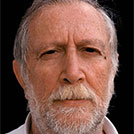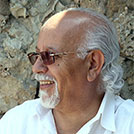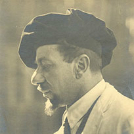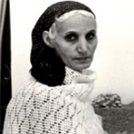| M |
|
 | Sliman Mansour was born on 27 July 1947 in Birzeit, West Bank, Palestine. He is one of the most distinguished Palestinian artists working today. Since the seventies, he contributed to the development of a visual iconography of the Palestine through the depiction of the orange and olive trees, traditional Palestinian embroidery, village life, and the figure of the Palestinian woman as the mother figure of Palestine, giving birth to and protecting the Palestinian people. He served as head of the League of Palestinian Artists (1986-1990) co-founded al-Wasiti Art Center (1994), and is a member of the Founding Board of Directors of the International Academy of Art Palestine (2004).
Read more |
|
 | Mohammed Melehi was born on 12 November 1936 in Asilah, Morocco. He is known as a leading modernist in Morocco. Since the 1960s, he has been elaborating a body of work based around the recurrent motif of waves. The canvases are consistently hard-edged and optic abstractions. He was a professor of painting, sculpture and photography at the École des Beaux-Arts of Casablanca (1964-1969), and with Farid Belkahia and Mohammed Chebaa, formed the Casablanca group. Melehi was an active member of the group associated with the leftist cultural journal Souffles from 1966 to 1969, and designed its original iconic cover. From 1972 to 1977, Melehi was founder and director of the cultural journal Intégral. In 1978, Melehi and Mohammed Benaïssa co-founded the Al Mohit association and the Cultural Moussem of Asilah, an arts festival known for its outdoor murals that continues to be held every year. Melehi was arts director at the Ministry of Culture from 1984 to 1992.
Read more |
|
 | Mahmoud Mokhtar, born on 10 May 1891, Tunbarah, is considered a pioneer of modern Egyptian art and sculpture, and occupies a prominent place in modern Egyptian history. Mokhtar's art is revolutionary in that it expresses resistance, strives for freedom and the nationalist cause of the masses. He deftly blended Pharaonic imagery with a modern European sculptural aesthetic to create quintessentially nationalist Egyptian artwork. He sculpted several Egyptian Fellahat 'women peasants' using bronze and granite. Deeply moved by the 1919 Revolution, he sculpted a statue (a model) called Nahdat Misr (Egypt's awakening) for the Salon des Artistes Français in 1920. After many years of fundraising, the sculpture was unveiled in 1928 in Bab el-Hadid Square (currently Ramses Square) facing the Cairo railway station (later moved to Cairo University campus in 1955), and continues to be a powerful symbol of Egypt to this day. After his premature death on 27 March 1934 in Cairo, prominent intellectuals, including Huda Sa'arawi, Ramsis Wissa Wassef and Ragheb Ayad founded the Mahmoud Mukhtar Museum in Cairo.
Read more |
|
 | Born in 1931 in Bordj-el-Kifan, Algeria, and known primarily as Baya, the Algerian painter Baya Mahieddine (pseudonym for Fatma Haddad) was a figurative painter. In 1947, when the artist was just sixteen, she had a solo exhibition at the Galerie Maeght in Paris, France, and participated in the Second Surrealist Exhibition, organized by André Breton. Although Baya never attended art school, from an early age she painted alongside Marguerite Caminat Benhoura, a French painter and collector who “discovered” her when Baya was eleven. Baya’s paintings, often described in their early, colonial-era reception as “naïve,” “primitive,” and “childlike,” use bright primary colors to depict cheerful scenes in which women, birds, and vegetation are frequent subjects. Baya’s importance in twentieth century modernism has been recognized with solo and group exhibitions, including a number of posthumous exhibitions in France and the United States. Baya died on 9 November 1998 in Blida, Algeria.
Read more |
|
| Ahmed Morsi is a contemporary Egyptian artist who combines painting and Arabic poetry in order to deal with universal themes of existence and isolation, as well as dreams and the subconscious. Morsi was born in Alexandria and grew up to channel the arts scenes of his coastal home city and urban centers abroad into his visual and literary practice between the 1940s and early 1970s. He developed his painting and poetry practices in the 1950s alongside prominent Egyptian artists in Alexandria, as well as playwrights and intellectuals in Baghdad, Iraq. In addition to his work in book design and illustration, Morsi’s Arabic prose reflects themes found in his acrylic and oil paintings in what some scholars and critics have described as contemporary “Egyptian Surrealism.” Since relocating to the United States in 1977, he has continued to produce visual works concerned with surrealist themes and exhibits his artworks in the U.S., Egypt, and internationally.
Read more |
